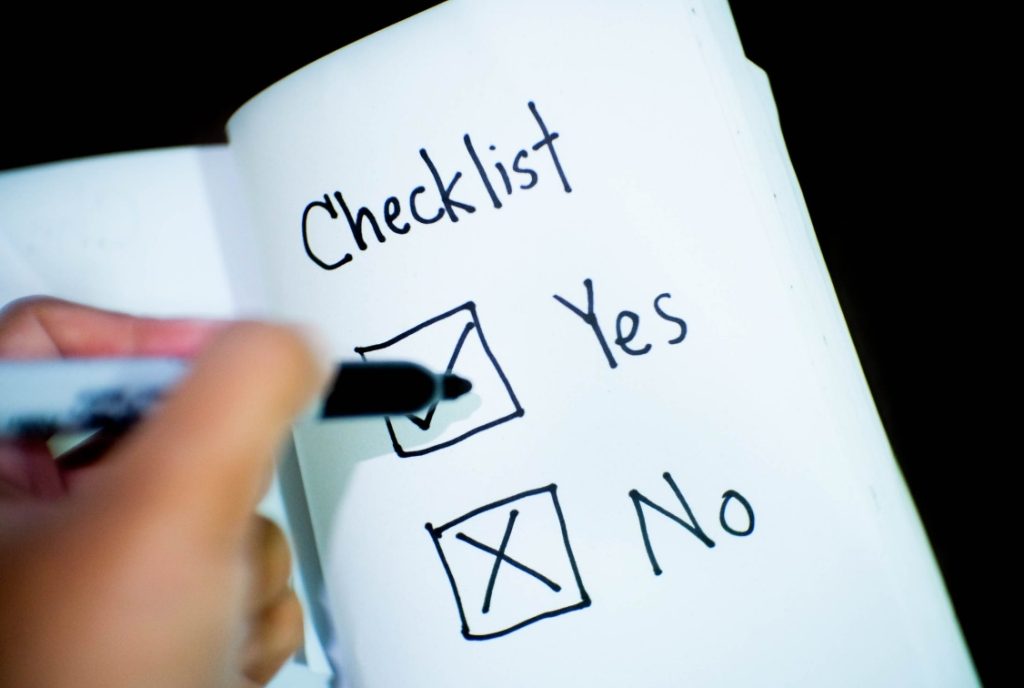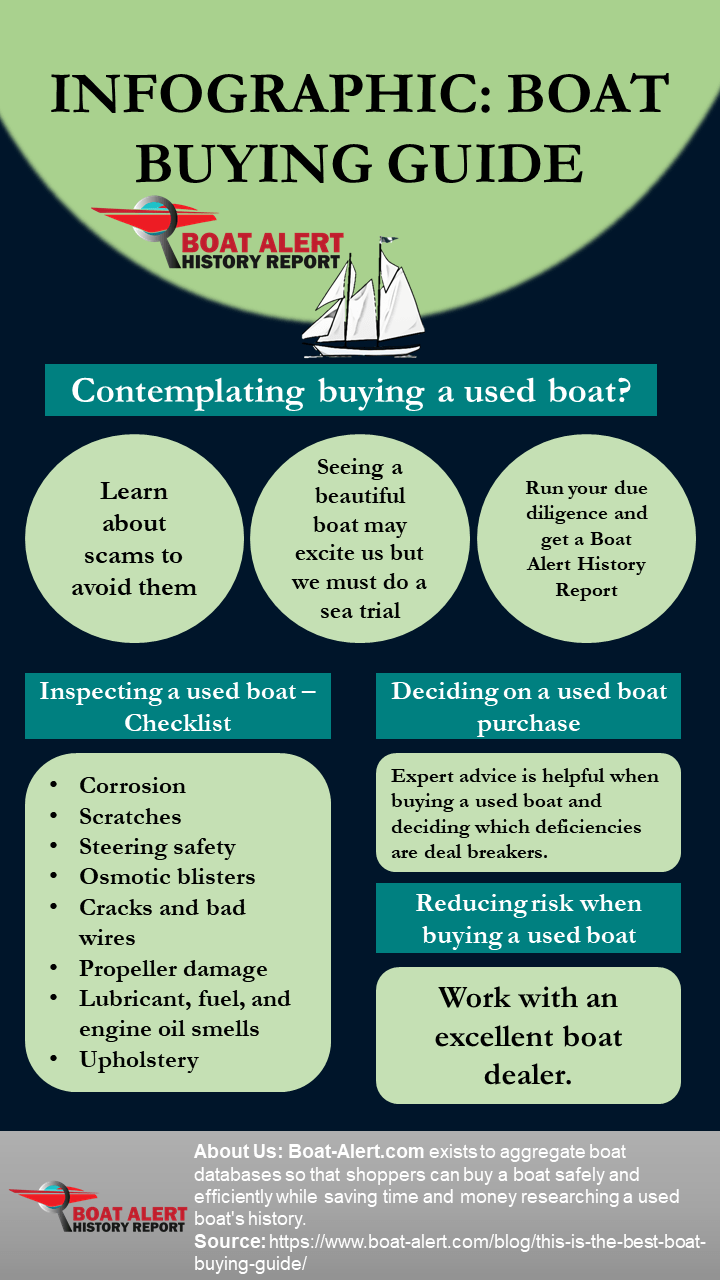This is the Best Boat Buying Guide
Avoid these common mistakes and don’t get scammed when buying a second-hand boat. Here we provide you with essential tips for purchasing a pre-owned (used) boat confidently. If you are a boat seller, please check out our Best Step by step guide to selling your Boat (How to sell a used boat).
Table of Contents
Contemplating buying a used boat?
When it’s time to think boating, and you’re contemplating a boat purchase, do I buy new or used? If you’re going to shop within the used boat market, be prepared and avoid mishaps or scams with a list of tips that can save you a lot of money or unsafe boating. You might even be wondering if you should be buying from a dealer. In that Ask the Boat Dealer these 10 questions before you buy it.
Used Boat buying pitfalls
It is all too common that we fall in love with a boat and thus overlook the inspection and be lured into talking about the performance aspects of the boat. We all have that itch to just start boating! But wait, we need to do a sea trial first. This testing phase on the water is the most vital step within the buying process after looking up the HIN History. We always recommend a thorough sea trial before accepting a boat or making a payment. However, please do these important checks steps first!
Inspecting a Used Boat – Checklist

Just in case you’re unsure what to ask or what to look for, here is our list of the most important things to look for when inspecting a pre-owned boat.
Corrosion is a deciding factor because the majority of the metal on the boat is exposed to the corrosive environment of sun and moisture. Add salt into the mixture and it gets magnified. Look for excessive amounts of grey/white chalky corrosion (on aluminum) or streaks of red/brown on steel. An abundance of this could be a warning call that the unit has seen salt water. One common overlooked fault is the use of different metal pins and bolts in joints. Steel pins attached to aluminum panels or bolts attract an electrical charge that will make a hot corrosion point. Metal joints must be of the same material to avoid this serious fault.
Cuts, chips, scratches, old repairs can cause problems. Check the entire surface, looking carefully for scratches (minor), chunks of gel coat missing, or areas that had a special color or texture. The latter may indicate an area of previous repair. Any of these issues are common, and will not cause any usage problems (unless there’s exposed fiberglass below the waterline). However, they’re going to cause a reduction in value. It could also indicate that an accident was repaired. make sure to look up the HIN on boat-alert.com to make sure there was no reported accident.
Steering could also be a key to safety. One of the foremost dangerous and expensive problems with a ship are often a worn steering system. the foremost common points of wear and tear are within the cables, or mounting areas. To check this, grab a hold of the drive or engine and with plenty of force, move it back and forth. There should be limited (less than a 1/8 inch) play or slack. If you easily move the drive while the wheel remains still, there could be a serious safety issue and an expensive repair.
Osmosis is an important sign. Hull condition is typically the first place it will start out. It is considered the “foundation” of your boat. Osmotic blisters are pockets of moisture that get trapped between the layers of fiberglass and/or between the fiberglass and gel coat layer. They appear like blisters and should often be seen or felt as bumps on an otherwise smooth surface. They’re predominately found on the hull below the waterline. Over time, they’re going to grow and even pop as more moisture collects there. Although the osmosis won’t degrade the structure if the boat, they could reduce your boat’s resale value and may likely need to be repaired. They are fairly common, and on a 10-year-old boat, a few of very small ones are ok. Larger blisters should be avoided though.
Cracks are often concerning. Look carefully for cracks within the gel coat above and below the water line. Almost every boat will have a crack or two (often found where fittings are mounted and stress points). Because fiberglass is flexible, and gel coat is brittle, not all cracks are cause for concern. However, multiple cracks in one area, or ones that appear to radiate in a pattern could indicate structural or impact damage. Also, multiple cracks within the transom or hull could hint to delamination.
check propellers for damage. Check the lower unit/skew for missing chunks, and rough areas. Check for numbers stamped on the hub of the prop from rebuild shops as clues to the unit being impacted at some point within the past. These damages could even be minor, or hint to internal issues.
Lubricant can hold clues. Check the condition of the lower unit lubricant. It should be free of metallic fillings, have no water (which may appear as a milky color), and not smell “burnt”. The last condition may point to pour maintenance practices while the first can signal major problems. Also, check the engine oil for the same. There are marinas that provide lubricant analysis for a cheap price which can pick-up trace chemicals that hint to problems. They often offer a quick warranty in conjunction with the analysis for a very reasonable price.
Fuel smell can tell. Crack the cap of the fuel tank and take a whiff. If there is a foul odor, the fuel could even be old and/or contaminated. If the tank is portable, plan to look for floating derby. Some good marinas offer fuel testing to verify alcohol/water concentration.
Upholstery often need cleaning! Which can be a troublesome task. Boaters have made the error of over cleaning their vinyl upholstery and using harsh chemicals that remove protectants in the fabric. Those protectants are there at manufacturing and will protect against molds and UV damage. If the upholstery is brilliantly clean compliment the owner then and ask what he/she uses to keep it looking that way. There is a listing of products that ought to not be used. Check the seams for pulling apart, and ensure the vinyl is soft to the touch and doesn’t feel papery or brittle.
Wires tell no lies. Check the battery connections for corrosion if it is tight. Look for loose connections, cuts and frays. Take a look under the dash if for the same issues. How old is that the battery? is the battery bulged, cracked, or sitting in liquid?

Sunken Boats
All of these things above are trumped by the “big one”: a ship that has been sunk! Look for oil stains within the upholstery and extensive corrosion on terminals within the engine compartment. This may be tricky to spot.
Boats with Liens on Them
A marine lien is placed on a boat when there is money owing on it. You need to search for these in different places. We explain it more details in our article How do you tell if a boat has money owing on it?.
Navigating the Waves: A Comprehensive Boat Buying Guide
Embarking on the journey of purchasing a boat demands a keen eye and a wealth of knowledge. Whether you’re delving into the realm of new vessels or exploring the allure of used boats, understanding the nuances of boat buying is paramount. Here’s a comprehensive boat buyer guide to steer you in the right direction.
Setting Sail: Essential Considerations
Before setting your sights on the perfect vessel, it’s crucial to arm yourself with the requisite knowledge. Our boat buying guide delves into the core elements to scrutinize during your search. From hull integrity to engine performance, we unravel the essentials that define a seaworthy investment.
Navigating the Depths: Inspecting Your Prospective Vessel
Delving beneath the surface, our used boat buying guide sheds light on the critical aspects of inspection. Beyond mere aesthetics, we delve into the intricate details of electrical systems, safety equipment, and telltale signs of wear and tear. Unravel the mysteries hidden within the vessel’s history to make an informed decision.
Charting Your Course: Mastering Negotiation and Value Assessment
In the realm of boat buying, negotiating the price is an art form unto itself. Our guide to buying a boat equips you with the tactics to navigate this intricate dance. From deciphering the true value of the vessel to crafting a compelling offer, embark on the journey with confidence and savvy.
Smooth Sailing Ahead: Embracing Your Adventure
Armed with the insights gleaned from our boat buyer guide, embark on your maritime adventure with unwavering confidence. From serene coastal cruises to adrenaline-fueled water sports, your vessel awaits to ferry you towards unforgettable experiences. With our guide as your compass, the horizon beckons with promise and possibility.
Deciding on a Used Boat Purchase
After you’ve inspected everything, you’d wish to make a choice if any of the deficiencies you’ve uncovered are deal breakers, negotiating points, or okay to simply accept as is. you’ll be wanting to hunt the advice of an expert within the sector (good marina with trained service staff, a surveyor, or perhaps a boating friend who has years of experience). Used boats command a high value relative to new boats, so be picky and do not be satisfied with poor condition. you’re paying good money and wish to receive a high-quality product.
Reducing your Risk when buying a used boat
All of these risks are often DRAMATICALLY reduced by working with a superb marina and boat dealer. they go to possess done these checks first, and can reject any suspect trades. If they found issues, they need to have remedied them and told you what they were and therefore the way they were fixed. look for marinas and dealers with a code of ethics, certification, or membership in organizations and Boating Certification. The Boat-Alert.com database combines 53+ nationwide databases into a single place so you can search in a matter of minutes. These include records for stolen boats, marine lien claims, boating accidents, pollution incidents, auctioned boats, factory recalls, and boat manufacturers.

What’s Next?
After ensuring your potential boat is safe and seaworthy, it’s time to turn your attention to making it personal and functional. Investing in custom boating gear can not only enhance the aesthetic appeal of your vessel but also cater to specific functionalities tailored to your boating lifestyle. Whether you’re looking for the latest gadgets or unique accessories that reflect your style, updating your gear is an essential step for any boat owner.
Conclusion
The above list can function as a guide to a variety of the things to look for. It is often used whether you plan to undertake boating on a Lake, a wide river or channel.
Ultimately used boats can provide good value through lower initial price, and potentially reduced overall depreciation. However, a few repairs and higher maintenance costs can push the cost-of-ownership towards new boats if you are not careful.
Read Related Articles:
- Jet Ski Bill Of Sale [Important Facts!]
- Top 7 Boats Buying Strategies | Boat Buying Secrets
- District of Columbia Boat Registration – DC boat search
- Tennessee Boat Registration
- How to buy a Used Personal Watercraft (PWC) or Jet Ski
Categories: To learn more about Boat-Alert.com History Reports for used boats and boat ownership visit: www.Boat-Alert.com